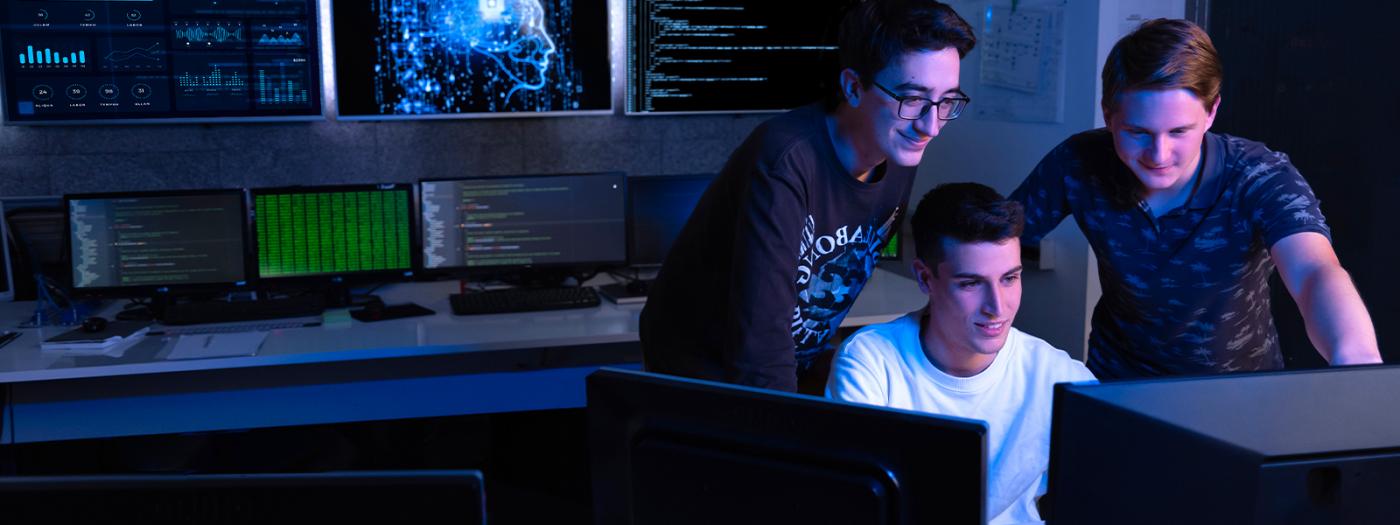Basic skills on logic design and on high-level programming languages (C)
In a generic way, students of the subject Equipment Peripherals acquire knowledge and develop the following skills:
1. Having knowledge of the subsystem I / O required for the computer design and use of these subsystems.
2. Design and use systems, components, methodologies, tools and simulation experiments to achieve the requirements and analyze and interpret the results.
3. Identify, formulate and solve problems of architecture and design of peripheral devices and subistem I / O in a multidisciplinary environment, individually or as a team member.
4. Mastering the design methodology and programming in a cooperative metodology way
11. Introduction
1.1. Type of periheral.
1.1.1. Internal standard:
1.1.1.1. Time control: Timers, Capture, PWM and RTC
1.1.1.2. Analog / Digital: ADC, DAC, comparator, voltage reference
1.1.1.3. Digital: PORTS
1.1.1.4. Synchronization: Interrupts and DMA
1.1.1.5. Communication: UART, SPI, I2C
1.1.1.6. Special: Generation of reset, oscillator and consumption management
1.1.2. Unusual internal or external via I2C or SPI
1.1.2.1. TFT LCD
1.1.2.2. Resistive touch panel
1.1.2.3. Capacitive Touch
1.1.2.4. Accelerometer / gyroscope / compass
1.1.2.5. Ethernet Controller
1.1.2.6. USB Driver
1.1.2.7. Audio and Video Codecs
1.1.2.8. MPEG4 compressors
1.1.2.9. Encryption and unique identifiers
1.1.2.10. Motor control
1.2. Treatment of the input / output
1.2.1. Encapsulation of access
1.2.2. Ports that are only writing
1.2.3. Treatment of basic analog
1.3. Current architectures. Track staff work to choose between one of theese
1.3.1. Processor: ARM or x86
1.3.2. Peripherals and internal organization
1.3.2.1. Desktops
1.3.2.2. Portable
1.3.2.3. Notebooks
1.3.2.4. PDA (calendar / audio / phone)
1.3.3. Operating systems for mobile devices
1.3.3.1. Google Android
1.3.3.2. Apple IOS
1.3.3.3. Nokia Symbian
1.3.3.4. BlackBerry OS
1.3.3.5. Microsoft Windows Phone
2. Time management and interruptions
2.1. TAD Timer
2.2. Control timing of demand
2.3. Interruptions and areas of mutual exclusion
3. Cooperative Engines
3.1. State machines
3.2. Graphics
3.3. Example of manipulating a keyboard and display
4. Treatment of serial communications
4.1. Management Channel series: the TADSIO
4.2. Treatment of plots
4.3. Treatment protocols
5. Design Methodology
5.1. Design of first level
5.2. Structure of the main
5.3. Dictionary definition
5.4. Expansion to the second level
5.5. Examples
6. Synchronization and planning interruptiva
6.1. Need to AFIT uncertainty
6.2. The technique of planning interrupt
6.2.1. Timing and Optimization
6.2.2. Example
6.3. Calculation of interrupt uncertainty
6.4. Transfer to interrupt or DMA
7. Interface man / machine
7.1. Capacitive keyboards
7.2. Motion sensing with MEMS
7.3. USB Interface
The teaching methodology uses master class type of lectures reinforced with the use of visual materials (slides and computer presentations). Some of the class time, mainly towards the end of every group of lectures, is devoted to solve problem sets. The students have also access to course handouts as well as to both solved and proposed problem sets. They are intended as additional material to work on the course subjects outside the class time.
Additionally, the students must complete computer assignments intended to be worked out in groups of two. They require the theoretical concepts acquired through the lectures to be applied in order to design, implement, debug and verify a system, starting from a set of specifications.
The methods used to evaluate the course are:
- Final exam.
- mid-term: Design the first and second level of a control system design methodology using cooperative La Salle.
- Research work on current architectures (Section 1.3).
The final exam consists of a mixture of theoretical questions and problems of application of the concepts studied. The statement includes an assessment of each question.
During the mid-term exam, there are no face. Students will design a control system and acquisition to the second level, while using the design methodology of La Salle and the cooperative program designed Bubble Wizard. Assessed the clarity, good organization and distribution of modules and interfaces and the completeness of state machines.
Each student must choose a topic of section 1.3 to make a report on the current state of the art, after collect, compare, filter and summarize the information collected by Internet or magazines available in the library (PC World, Spanish Byte, PC Magazine, etc.).
The grade of the course consists of the sum of the final examination (6 points) over the continuous assessment mark. Furthermore, the continuous assessment mark (4 points) obtained from the sum of research (2.5 points) over the note's design control system (1.5 points)
Not all research points to 2.5 opt, as the public presentation is worth one point and only a selection based on the quality of work will be exhibited in public.
Objective 1:
Acquire the know-how about the I/O subsystem of the computer required to design and use this subsystem. Evaluated by means of exams [A]
Objective 2:
Be able to design and use systems, components, methodologies, simulation tools or experiments to achieve the pre-defined requirements, as well as to analyze and interpret the results. Evaluated both by means of exams [A] and computer assignments [G+K]
Obective 3:
Identify, specify and solve architectural and design issues of both peripheral devices and the computer I/O subsystem in a multi-disciplinary environment, either in an individual way or as a member of a team. Evaluated mainly by means of exams [A]. Computer assignments provide additional information [G+K].
-[1] Escudero Costa, Francesc. Disseny de sistemes de control cooperatius. Una visió pragmàtica. Enginyeria i arquitectura La Salle, 2009.
[2] iMX21 Reference Datasheet. Freescale
[3] PIC24FJ128GA010 Family Data Sheet
[4] PIC24F Family Reference Manual, Sect. 17 10-Bit A/D Converter
[5] Techniques for Robust Touch Sensing Design. Microchip Application note.
[6] Introduction to Capacitive Sensing. Microchip Application note.
[7] Tilt measurement using a low-g 3-axis accelerometer. ST Microelectronics Application note.
[8] Using LSM303DLH for a tilt compensated electronic compass. ST Microelectronics Application note.
[9] LSMaker Acceleròmetre, nota d´aplicació. Enginyeria La Salle
[10] Revistes de divulgació: Pc Word, Byte, etc,
